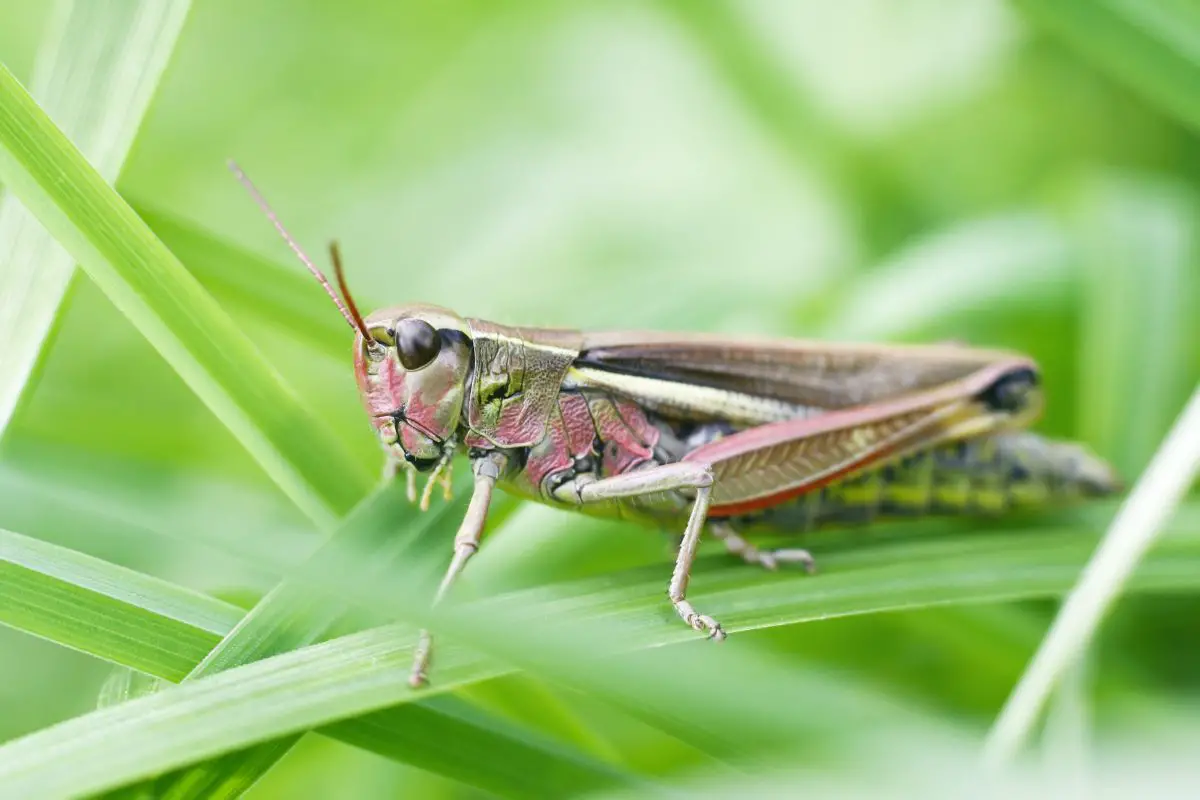
You’ve seen them hopping around in the Spring and Summer, a long insect that may take off in flight after a few minutes of watching them. Looking around, you will see more and notice that they are staying close to crops or flowers, seeking out vegetation. While these grasshoppers will not bite or sting, they put their destruction into the leaves and quality of crops.
Their diet consists of leaves and stems. They will also eat flowers, seeds, or dead insects where they can gather an extra source of protein. Most of these grasshoppers are two inches long and have wings to escape cold weather. The average lifespan of a grasshopper is about a year.
Below are some other insects that could be confused as grasshoppers or are just closely related.
1. Crickets
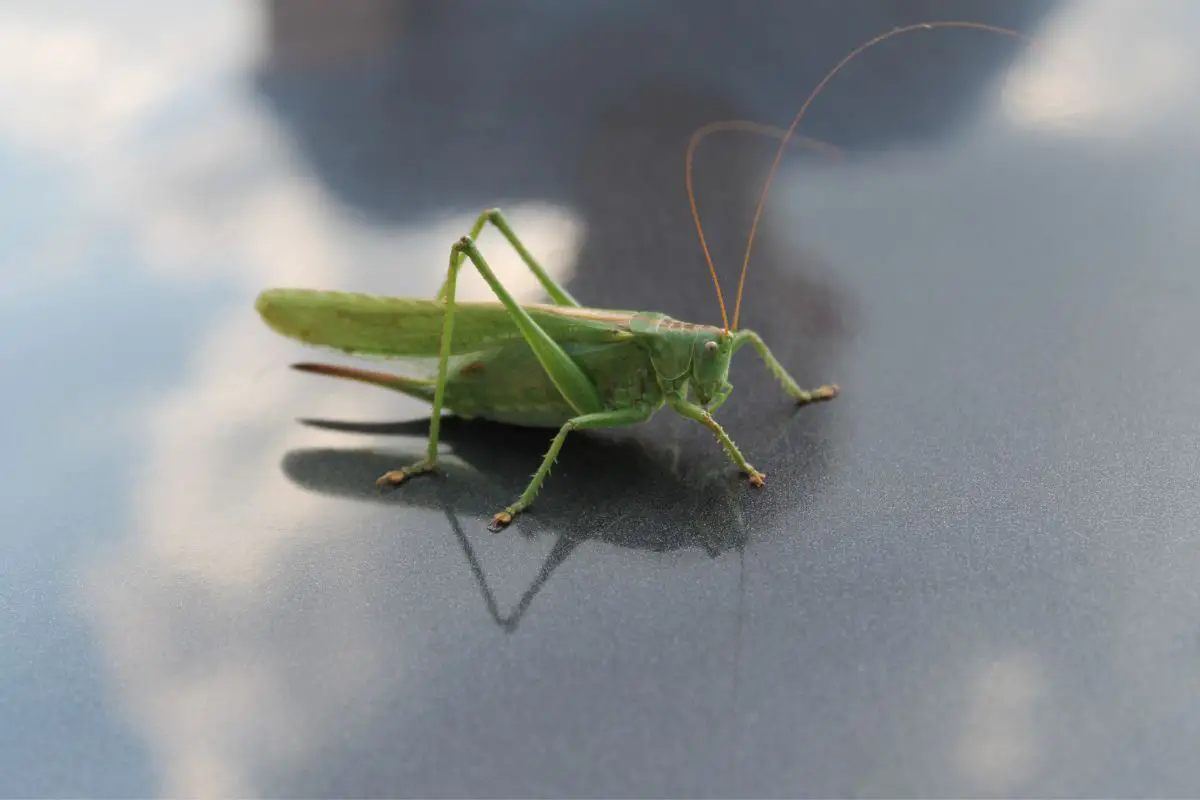
About a half inch shorter than the grasshopper is the closely related cricket. Coming out when it is hot outside and chirping loudly through the early night, crickets are the sound of country living throughout the country. They have long antennae like the grasshopper but do not fly like them.
They also have the long cylinder-shaped body that the grasshoppers have. They are not dangerous but prefer the evening hours instead of daylight. While the grasshopper has ears on its belly, the crickets have their ears on their legs.
2. Mole Crickets
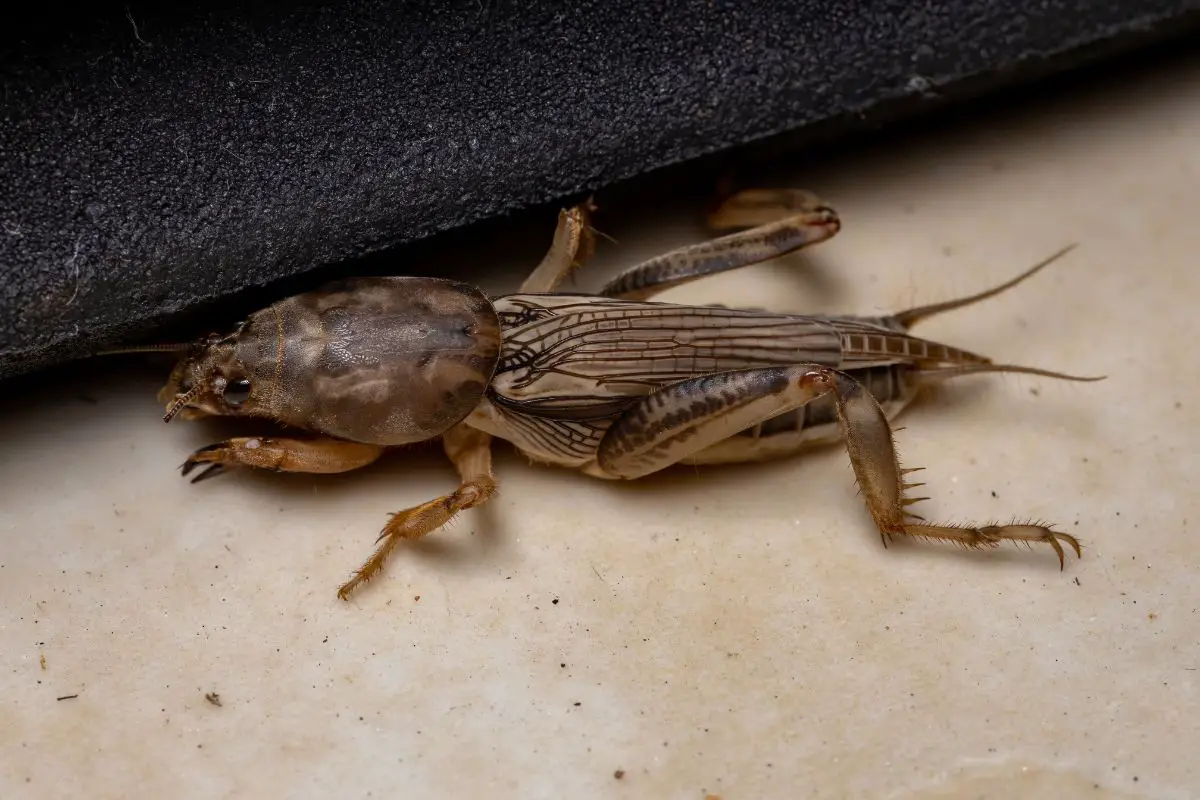
More significant than the cricket, the mole cricket is the same size as a grasshopper, around two inches long. While many of these are herbivores like the grasshopper, there are cases where some will feed on worms and grubs for survival. They are found worldwide and have a loud song, like cicadas.
Unlike the grasshopper, they are brown or almost translucent. They have two pairs of wings and can fly like the grasshopper.
3. Flower Mantis
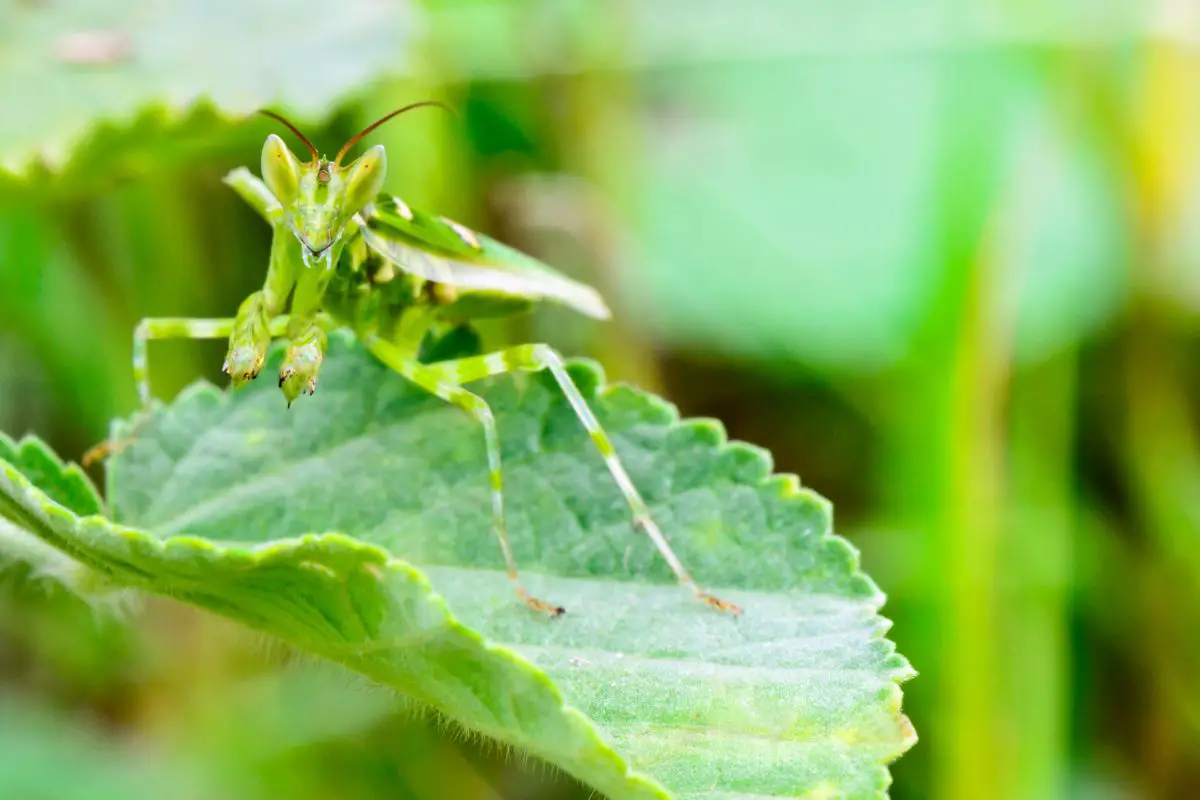
Like the grasshopper, the flower mantis can be found throughout the day, camouflaged in flowers like the grasshoppers are camouflaged in leaves. The big difference is the flower mantis’ form of mimicry is meant to attract smaller insects, as they are omnivores. They are found throughout the spring and summer months, often alongside grasshoppers in many areas.
Smaller grasshoppers have been known to be prey for the flower mantis.
4. Malaysian Walking stick
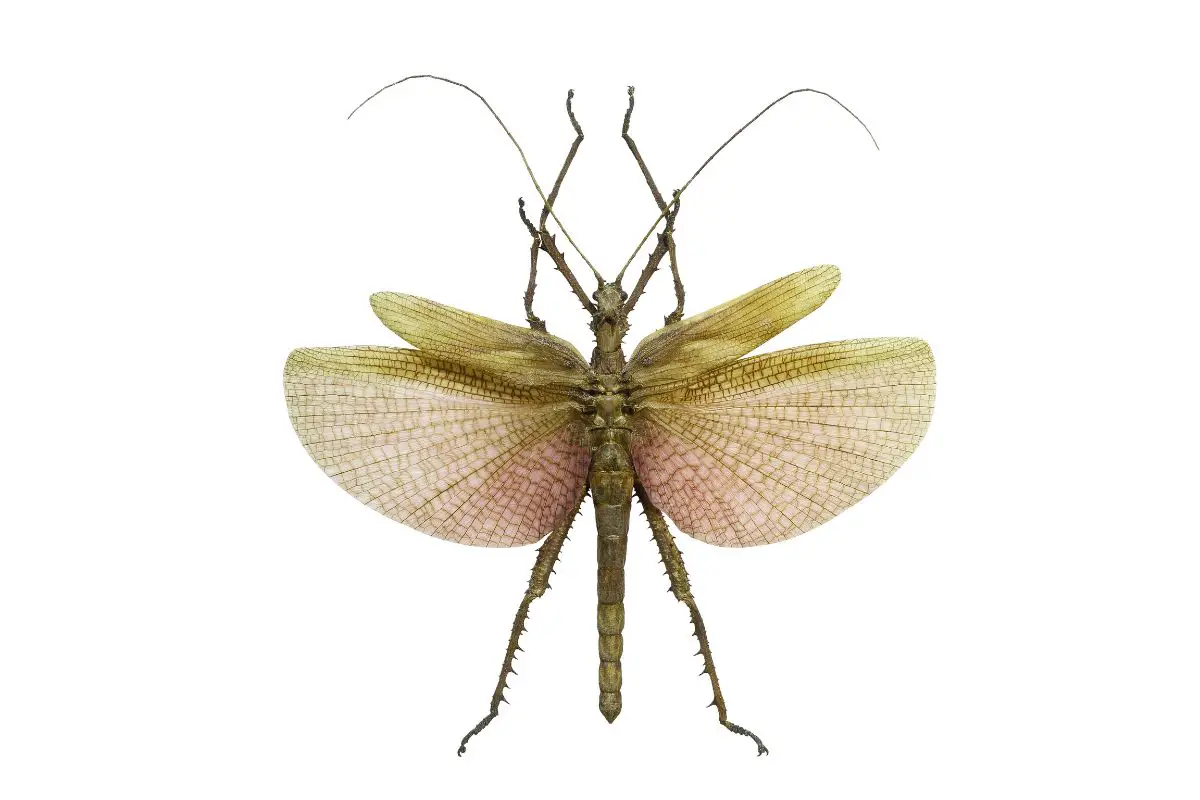
Taking mimicry and camouflage to another level is the Malaysian Walkingstick. Like the grasshopper, it blends in with its surroundings, appearing as a stick on a branch or plant. Like the grasshopper, the Malaysian Walkingstick also has wings, but the males can only fly.
The female wings are not meant for flying. They are native to Asia, although they have been found in other continents due to traveling and trade. They have a similar diet to the grasshopper, consuming the leaves on their hiding branches.
5. Giant Prickly Stick
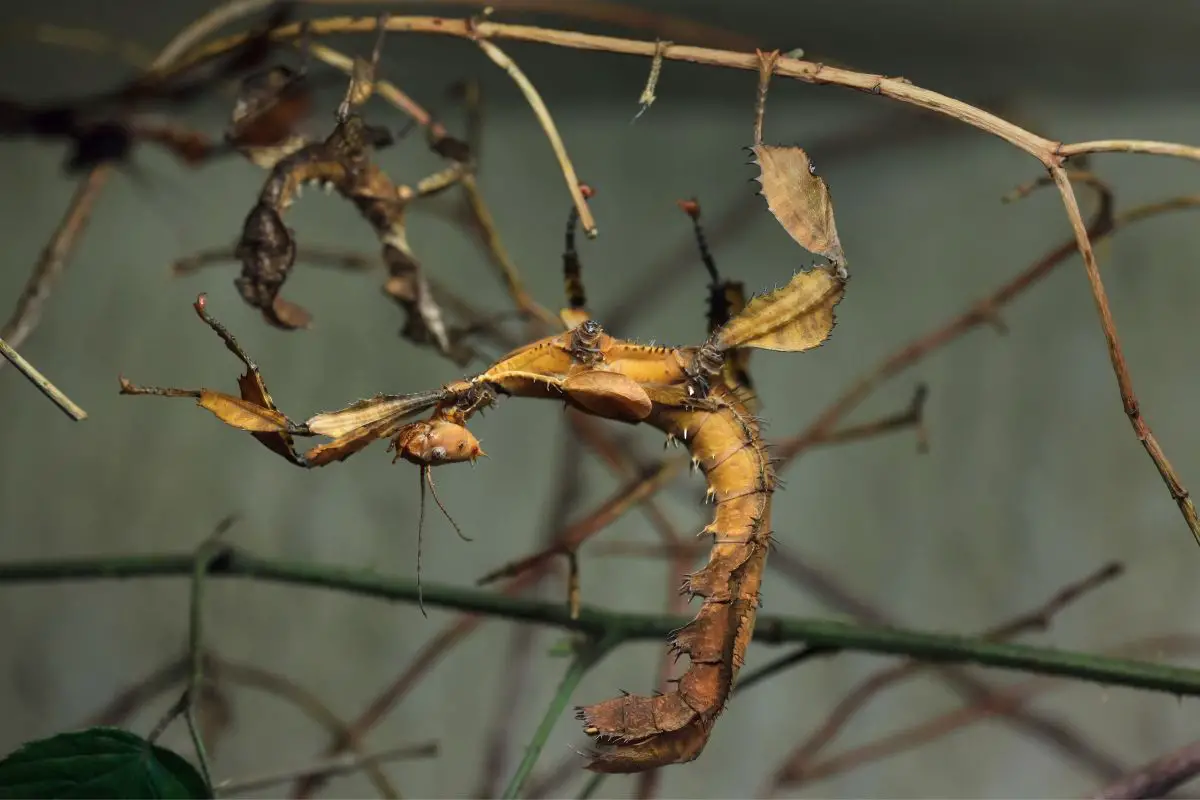
Just a half inch longer than the grasshopper, the giant prickly stick also hides beneath leaves like the grasshopper, taking the appearance of sticks and prickles as a way to ward off predators. While both males and females are long, the females are stockier, and the males are more like the grasshopper, taking that slender look and the ability to fly. One big difference between the giant prickly stick and the grasshopper is when they are out.
The grasshopper is found throughout the day while the giant prickly stick moves around at night. They are also not verbal like grasshoppers.
6. Hissing Cockroach
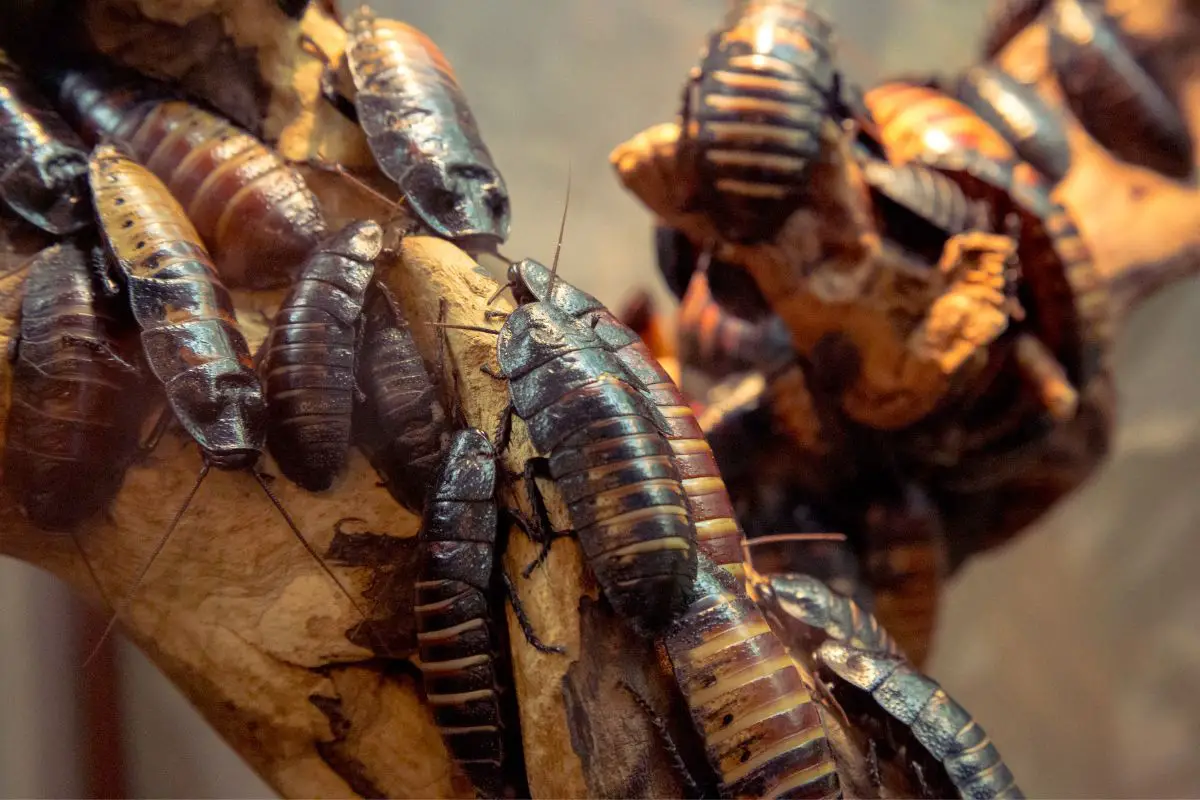
If you are wondering what the hissing cockroach and the grasshopper have in common, it is their sounds and ability to be vocal. Like the grasshopper, they are also herbivores, dining on the leaves and rotted wood. They are native to the island of Madagascar in a different environment from grasshoppers.
However, they tend to colonize and make noises to come together and alert other cockroaches that danger is nearby. They live longer than the grasshopper, with most averaging around 18 months. They are similar in size, around two inches long, but the hissing cockroach is stockier than the grasshopper.
7. Praying Mantis
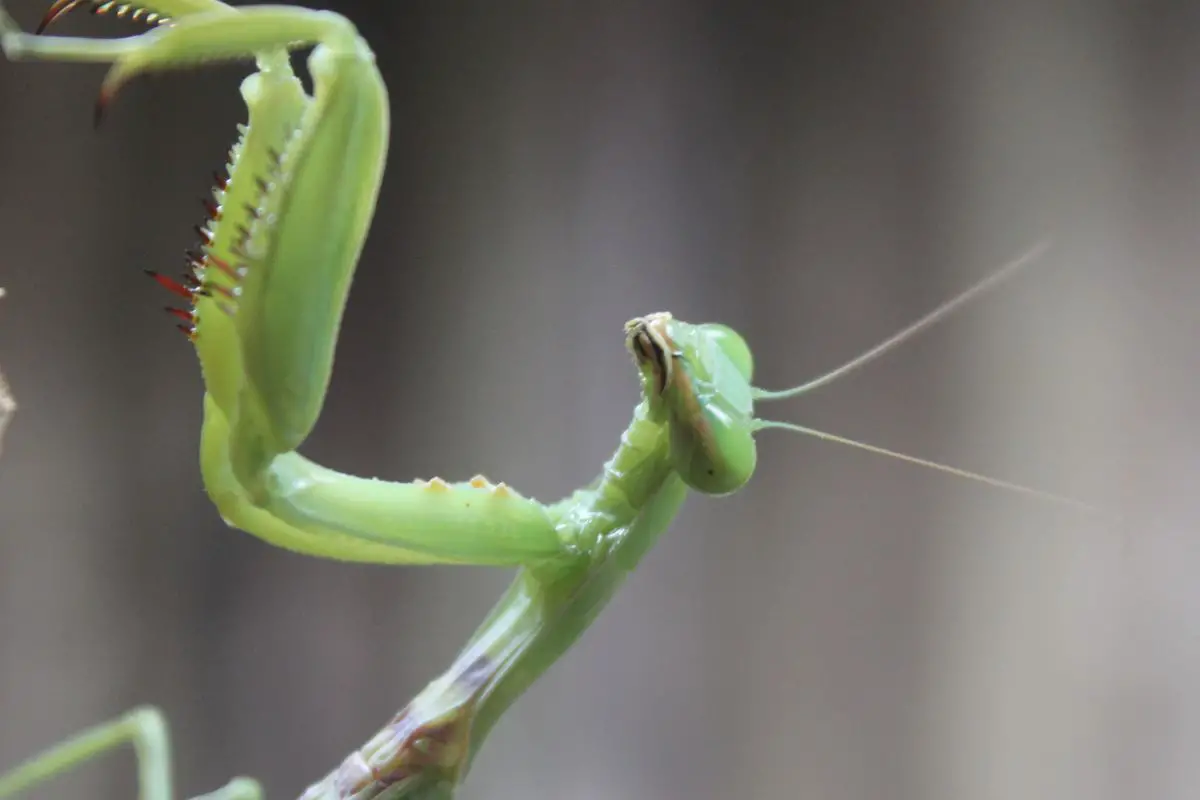
Another slender insect that is sometimes confused for the grasshopper is the praying mantis. Like grasshoppers, they are green, hiding on leaves, but they have a different reason for being there. While grasshoppers are eating the leaves where they are hiding, the praying mantis is waiting for their prey to come and take advantage.
They do not have wings to fly like the grasshopper, but they will prey on grasshoppers and other insects that are found navigating the leaves of different trees and plants. They do live around the same life span as a grasshopper, averaging between 10 months and a year.
8. Vietnamese Walkingstick
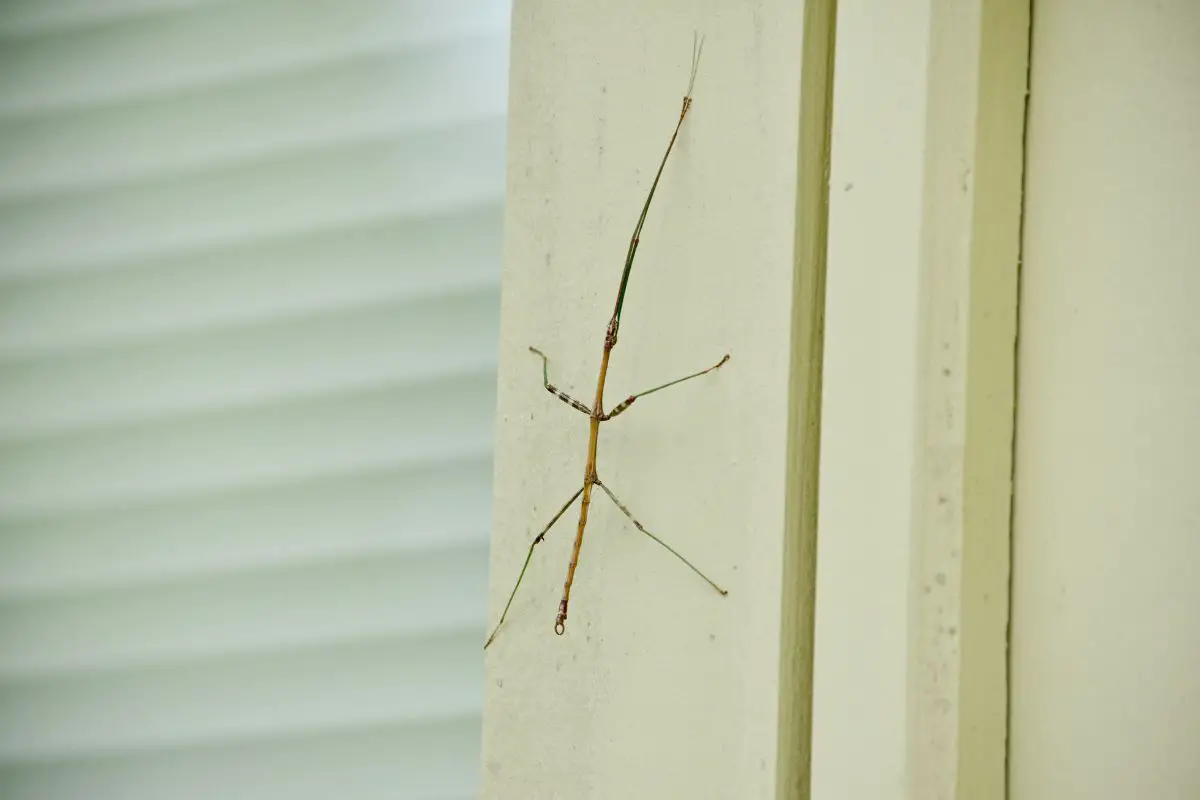
Long and skinny, there are some similarities between the Vietnamese walking stick and the grasshopper. Like the grasshopper takes the appearance of a green leaf, this walkingstick takes the appearance of a stick. Like the grasshopper, they can stand motionless and appear to be another part of the plant. Some walking sticks are green like the grasshopper, and they are herbivores.
They do share a few differences, such as the Vietnamese walkingstick cannot fly like the grasshopper, nor do they come out during the day like the grasshopper. Lastly, they are found in different areas worldwide, rarely in the same environment together.
9. Locust
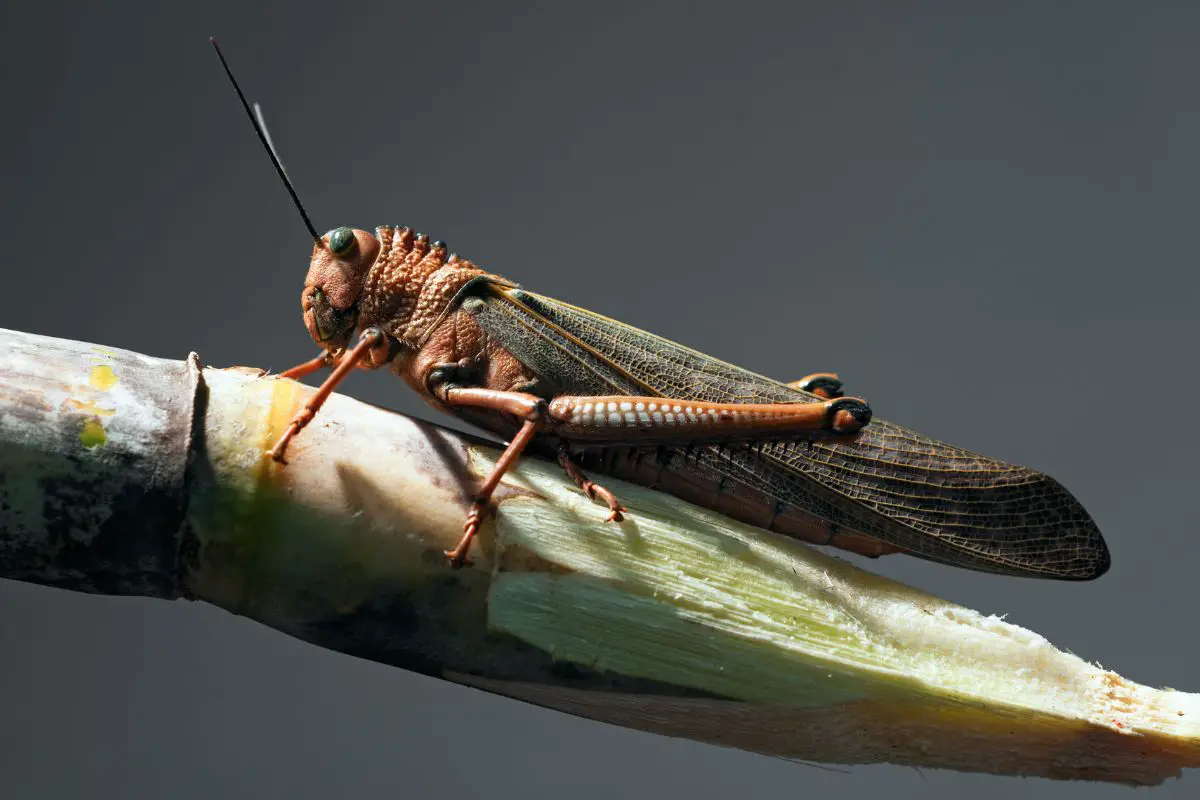
There are lots of similarities between the locust and the grasshopper. They are found on different sides of the world but are related and basically the same. Both of these insects are green and about two inches long.
The locust, however, is not as slender and can be either brown or green in color. They both are herbivores and consume vegetation and leaves where they are. Locusts are especially harmful, usually coming in large swarms and devouring fields at a time before flying to another location.
10. Bush Cricket
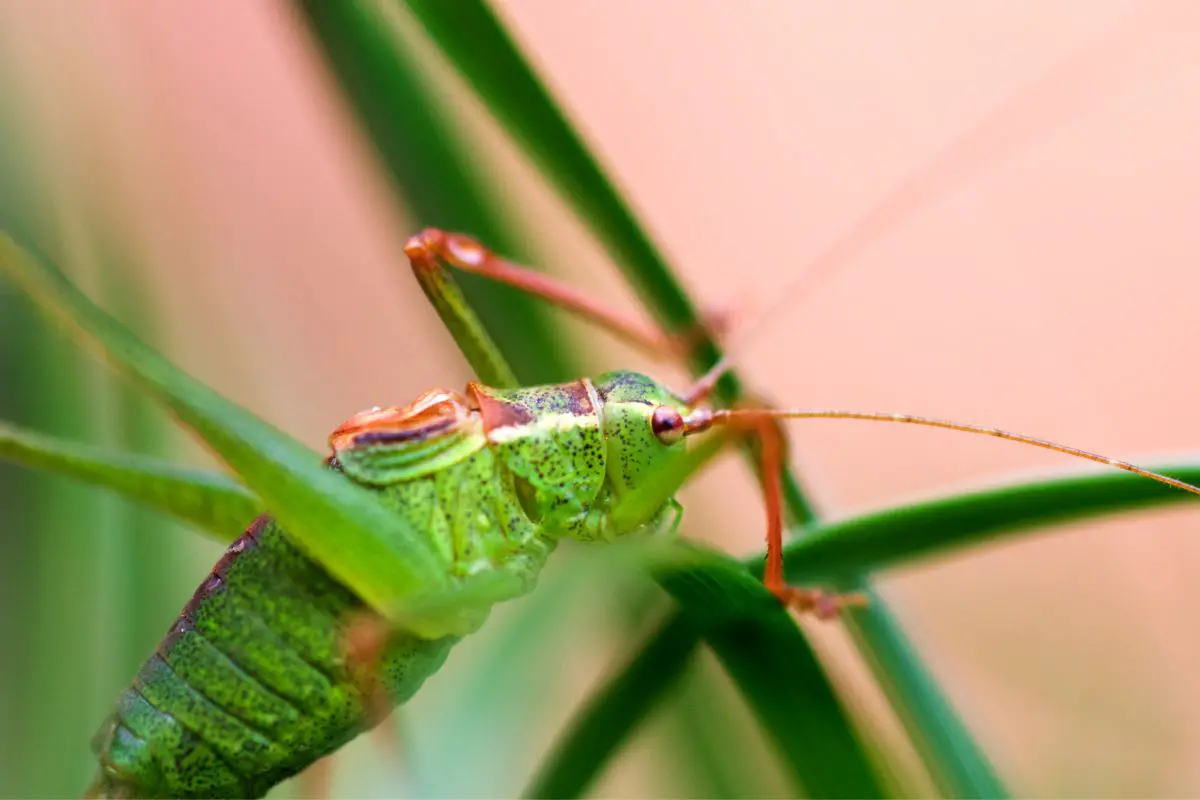
Larger than the grasshopper, some think the bush cricket is just a colossal grasshopper often. They have hind wings but cannot fly like the grasshopper. These bush crickets are often active through the spring, summer, and fall.
Like the grasshopper, they can live about a year at a time. They are omnivores, enjoying a healthy diet of leaves and other insects. The bush cricket is native to Western Europe, though some colonies have been discovered in North America.
Unlike the grasshopper, the bush cricket will bite if they feel threatened. While it will not be life-threatening, it could be painful. These bush crickets average a life span of 12 -16 months, which is just a bit longer than the grasshopper.
11. Japanese Leaf Insect
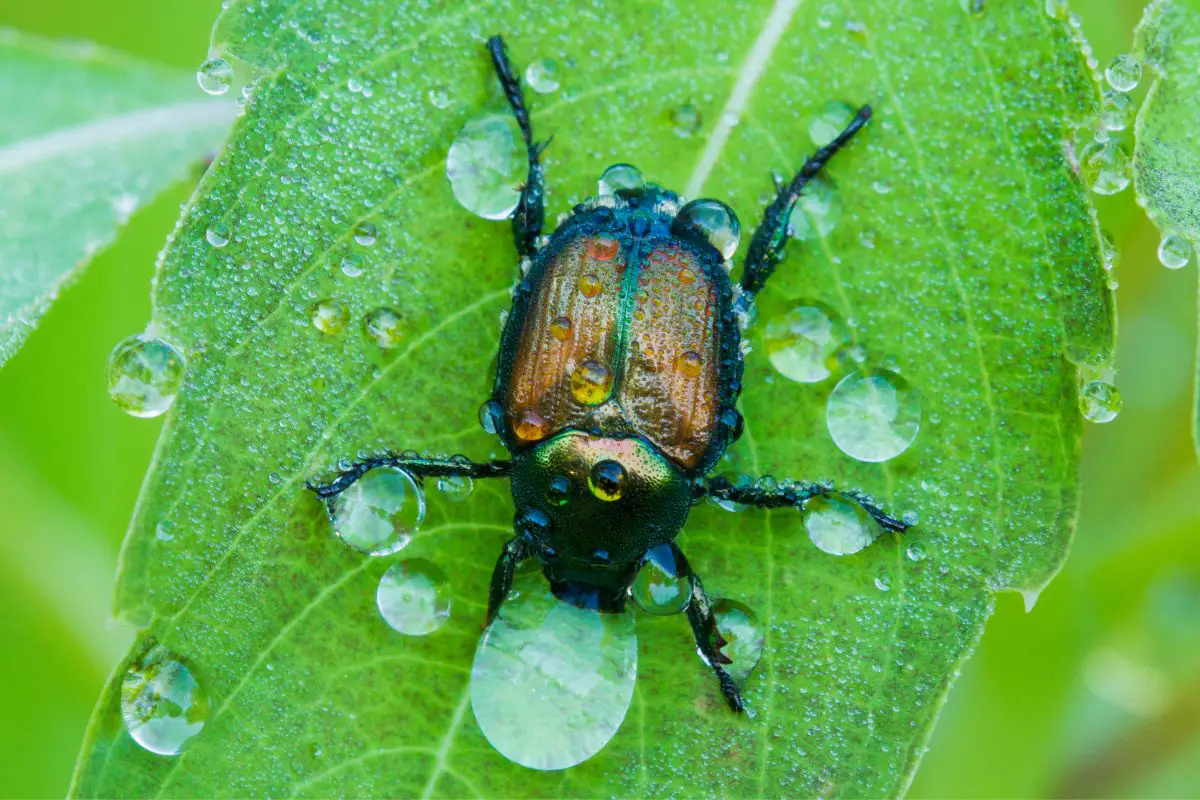
The Japanese Leaf insect shares some similarities with the North American grasshopper in Asia. Both green in color, these insects are slender and have bodies that help hide them from predators in their surroundings. They also both enjoy foliage eating leaves and vegetation.
This is beneficial for plants that need pruning, but there are negative impacts. They both have the ability to be harmful to their environment, destroying good vegetation. Both the grasshopper and the Japanese leaf insect have the ability to destroy healthy plants and crops if they go undetected in an area for too long.
12. German Cockroach
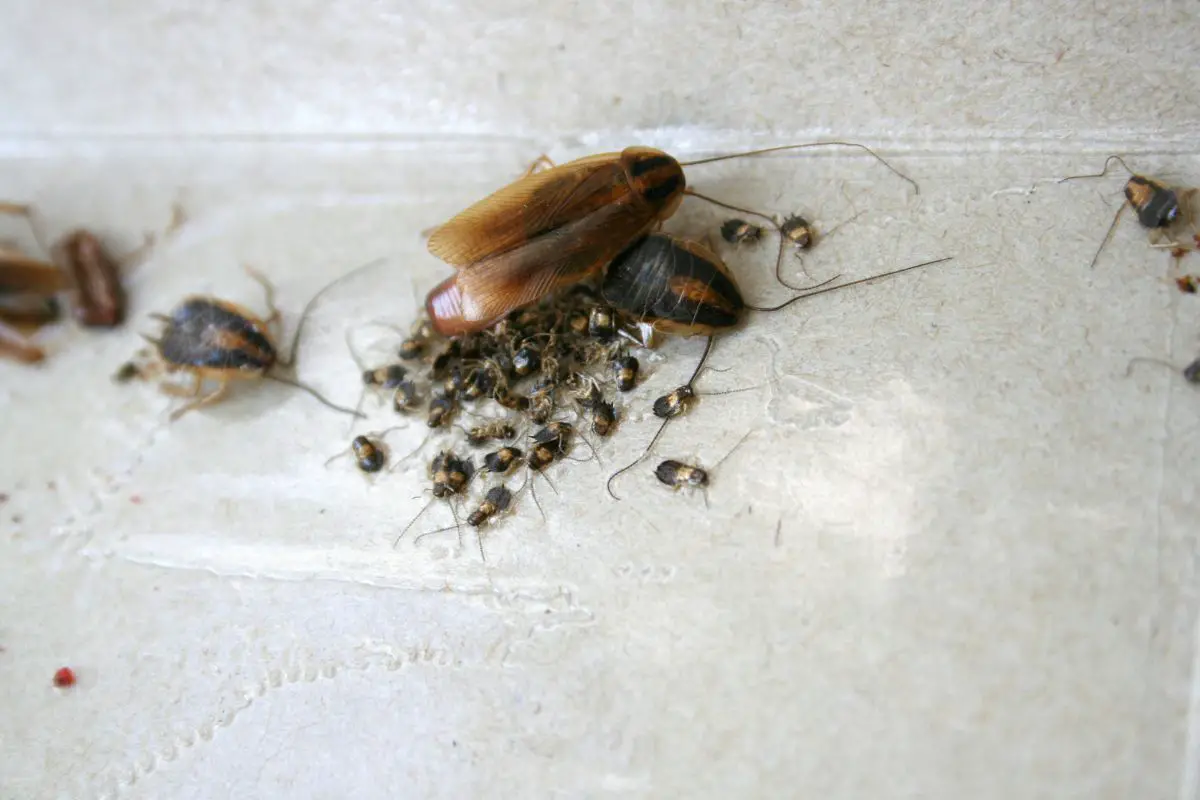
While they may have obvious physical differences, there are some similarities between the German cockroach and the grasshopper. No matter where they are, both tend to be pests and are usually treated to have them removed from the property. They are both six-legged creatures who are not predatory on other insects.
German cockroaches, however, will invade places and eat on food and trash that has a rotting smell or sugar. While grasshoppers are found outdoors, German cockroaches are found primarily indoors. Those found in the wild can be seen cleaning up the trash of the forest, eating rotting wood, trash, and rotted plants.
13. Northern Walkingstick
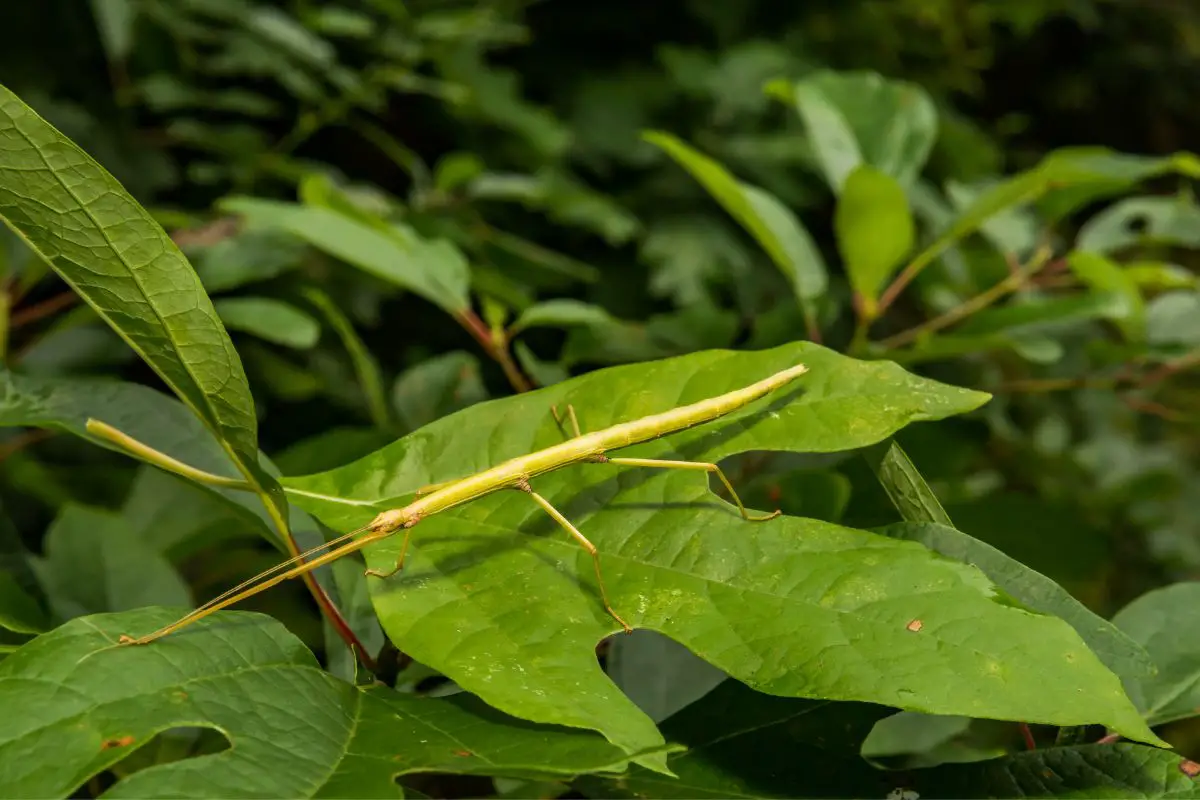
Found hiding among plants in North America is the Northern Walkingstick. You can easily miss it when looking because it will resemble sticks or branches in its environment. It is longer than the grasshopper by about an inch, but they have a similar slender body.
They also have a lifespan of around a year, just like grasshoppers. Both these insects are herbivores and use their mimicry to avoid predators like the grasshopper. They can be either green or brown, depending on where they are in their environment.
While the grasshopper can fly, the Northern walkingstick cannot.
14. Orchid Mantis
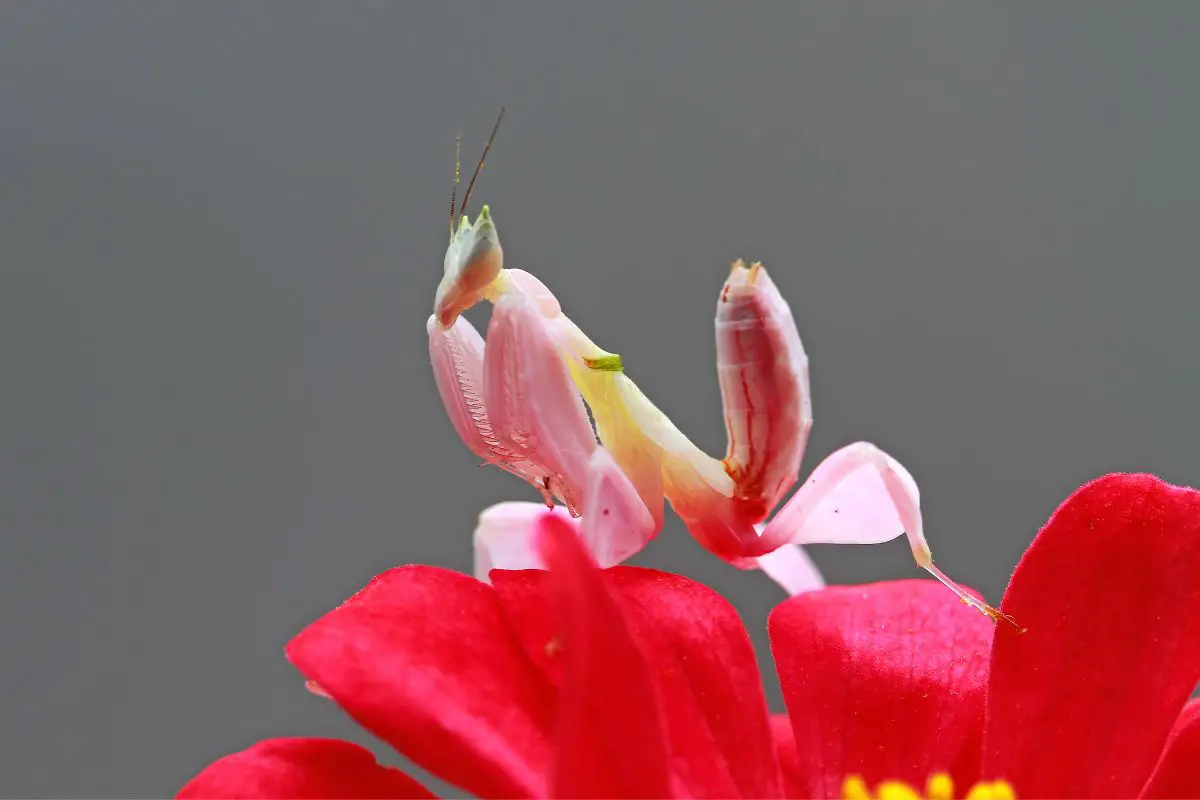
Another insect with a unique disguise is the orchid mantis. Like grasshoppers and other similar species, this mantis uses its mimicry for its own benefit. While the grasshopper can only be green, the orchid mantis can change colors to adapt to its surroundings.
Unlike grasshoppers, the orchid mantis is a carnivore, using its ability to look like the orchid to stay hidden until its prey gets close enough. They are just over two inches long, slightly longer than the grasshopper, but still, share that slender body type. The orchid mantis can fly like the grasshopper as they have two sets of wings.
15. False Katydid
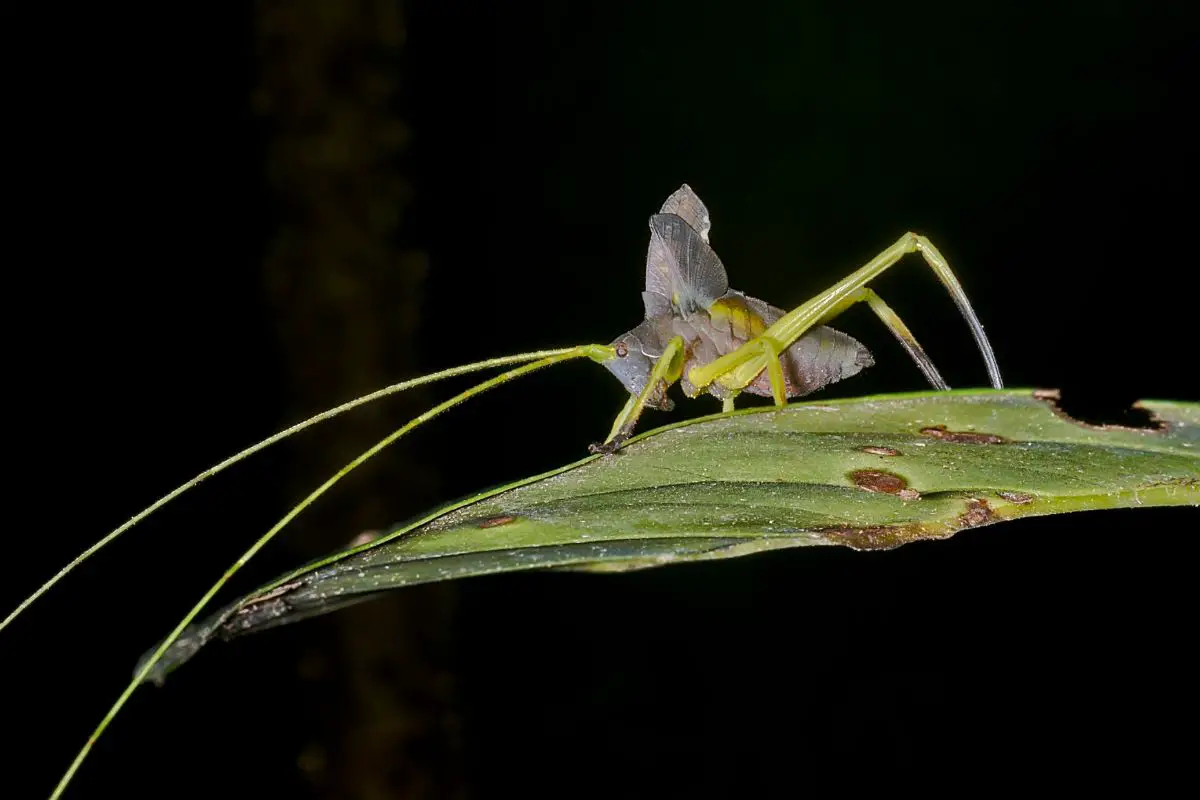
Another insect that enjoys sound and has a green body is the False Katydid. They look similar to the grasshopper, just more comprehensive through the middle but about two inches long. They are found in wooded areas and also grasslands like the grasshopper and can camouflage right into the plant where they are dining.
Like grasshoppers, they eat a variety of vegetation, so everything from crops to ornamental plants could be at their disposal. Like grasshoppers, they have the ability to be deemed as pests. They make sounds like the grasshopper, taking on the tic-tic where the wings are rubbing together.
16. American Cockroach
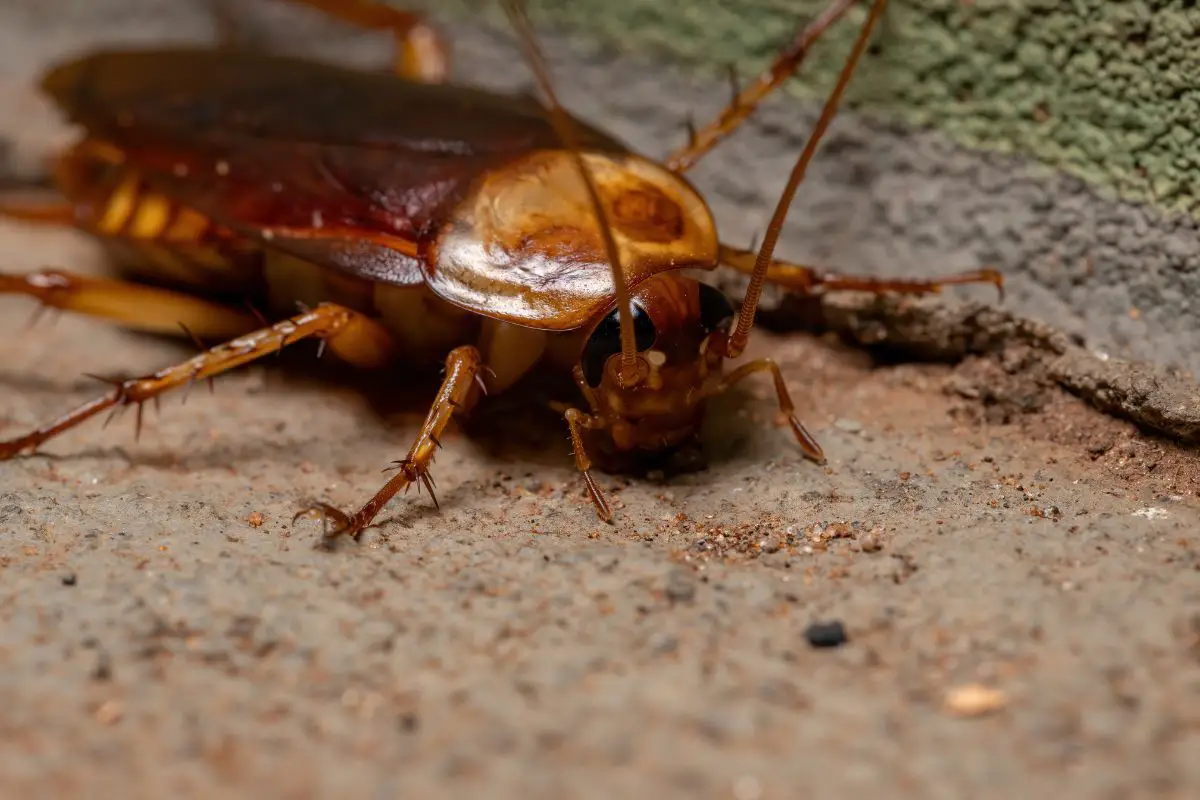
Like the grasshopper, the American cockroach is another pest that seems to make itself home in North America. Known as a water bug or Palmetto bug, the American cockroach usually appears after a lot of water has fallen, or the weather has turned cold. Like grasshoppers, they enjoy warm weather and are active throughout the day.
Both of these insects have six legs and move throughout the day. While the grasshopper will live about a year at a time, the American cockroach can live around 18 months on average.
17. Peruvian Firestick
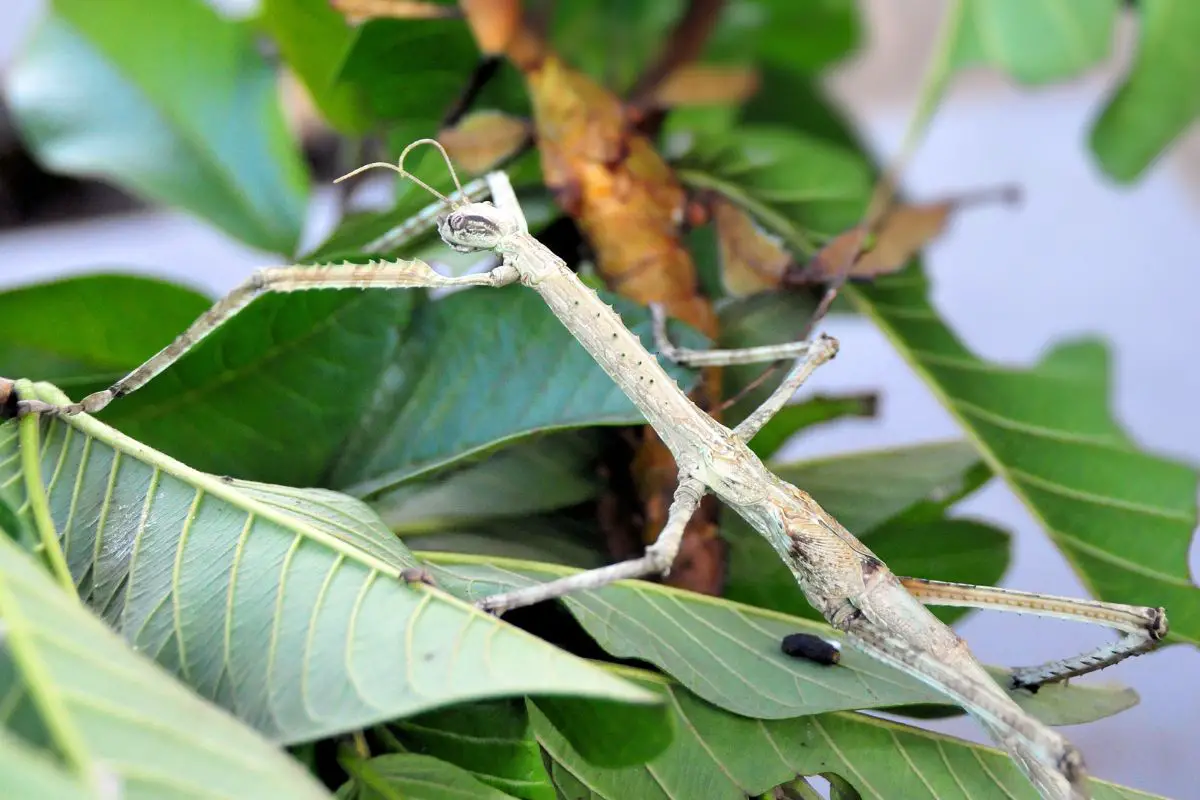
The Peruvian firestick is a unique insect that is similar to the grasshopper. Both of these insects are herbivores, taking advantage of the foliage in their environments for food. The preferred diet of the firestick is ferns in the rainforest.
However, one big difference between these insects is that the Peruvian firestick does not take on mimicry and disguise itself from predators. It takes a different approach with bright colors, appearing poisonous and keeping them away with their body fluid.
18. Giant Spiny Stick
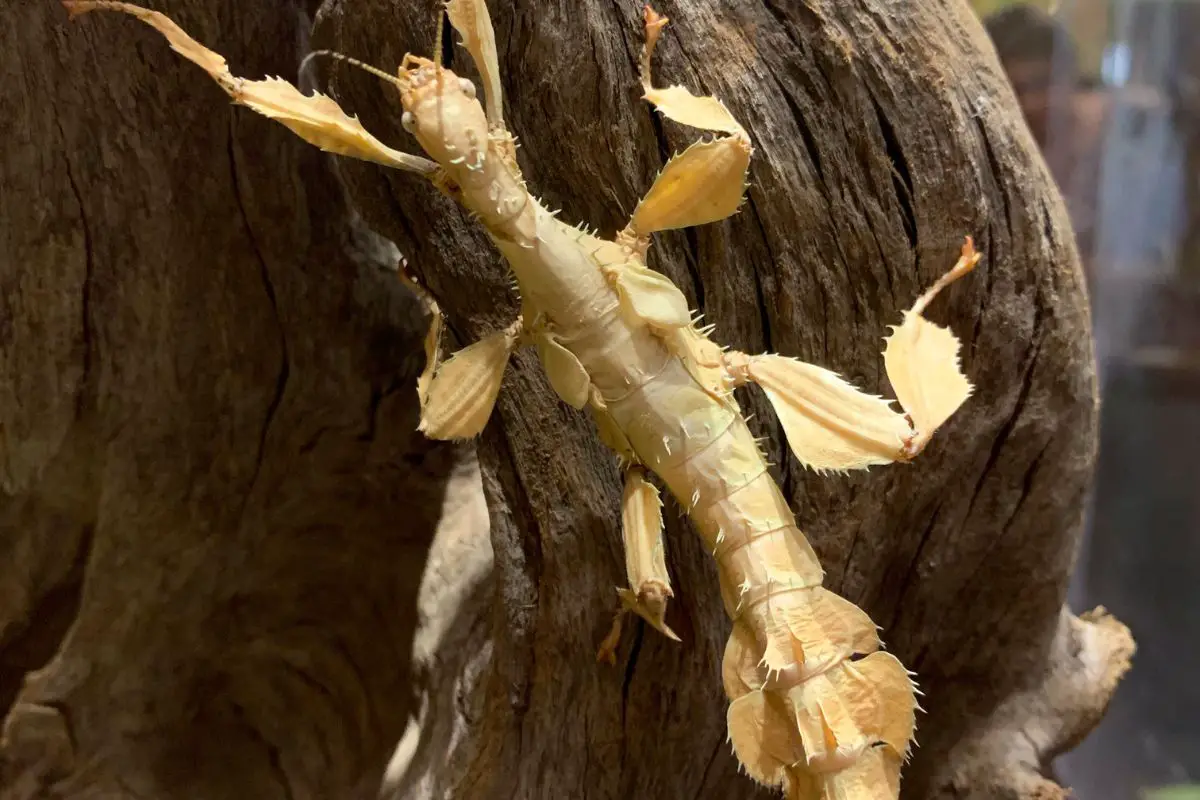
A six-legged insect in Australia known as the giant spiny stick is similar to the grasshopper. Both take advantage of hiding themselves on trees and plants, but the giant spiny stick looks just as the name describes. They are brown and about two inches long like the grasshopper.
What they do have is a spiny defense if they are picked up by predators. Instead of being vocal like grasshoppers, they release a terrible smell and ward off predators. They share a similar diet with grasshoppers, enjoying shrubs and leaves, which can be dangerous if left unattended for some time.
19. Cave Cricket
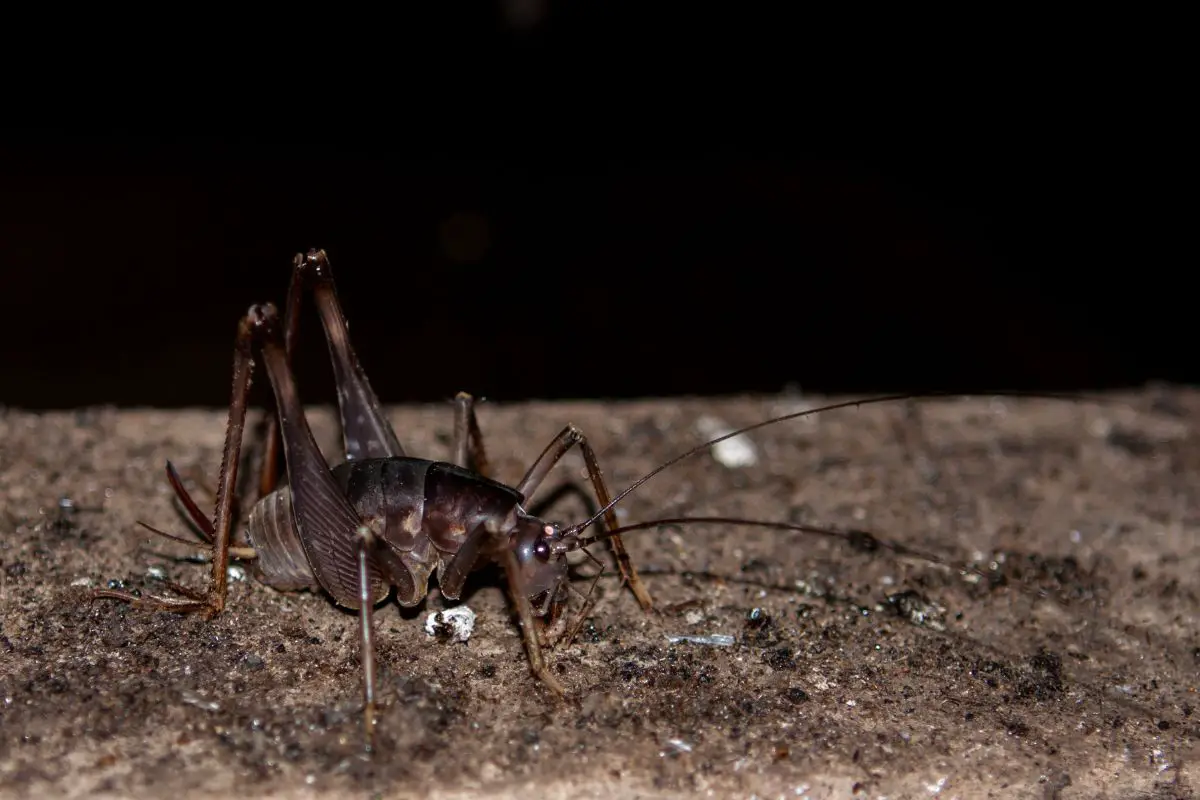
More extensive than a grasshopper, the cave cricket takes the same shape as them; however, just brown. The cave cricket is about three to four inches long, and they have long antennas. They are found in North America, but not in the grasslands where the grasshoppers are.
They are hidden in dark and damp areas, primarily caves and other areas where they can keep that same environment. They cannot fly, but since their legs are much longer than a grasshopper, they can take long leaps to navigate away from predators. Their lifespan is double that of the grasshopper, living about two years.
FAQs About Grasshoppers
Where do grasshoppers lay their eggs?
After mating, the female will enter the soil and dig a small hole to deposit eggs. This will happen multiple times until she passes away, leaving nests all along a property.
Do grasshoppers need water?
Because grasshoppers are usually out eating early in the morning after the dew, they get their water from the leaves they are eating.
What types of defense mechanisms does a grasshopper have?
There are no foul odors or spines on a grasshopper, so they are limited in their defense options. Sometimes, if they want to discourage a predator, they will essentially release the contents of their stomach to deter predators.



